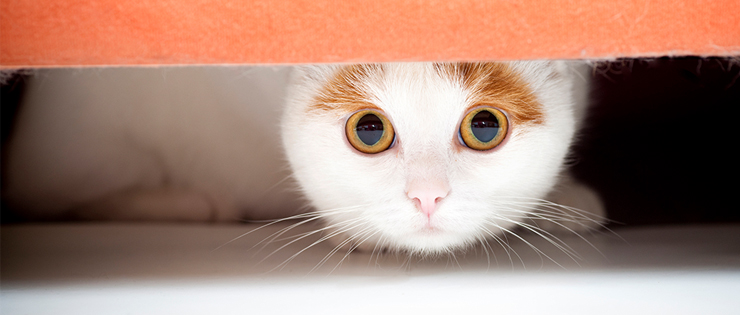
Cats often strike people as being furiously independent, self-sufficient and aloof. Some of us love this about them, whilst others prefer the company of a dog; a pet who is somewhat more loving. At least that’s what dog people say. But what strikes me about cats is how different they all are. No matter what breed or age, cats are individuals and display a range of behaviours in their relationships with us.
As I sit here writing this article, Pacho my tabby stray lies beside me on the couch. He followed me home one day and hasn’t left my side since. I never intended on adopting a homeless cat, however here we are. He had never been around people before me and even though he had lived his entire life without human contact, there is nothing he craves more. He is extraordinarily social with my dogs and I, insisting on being part of the family and has so much to say. Unfortunately, cats are greatly misunderstood and a major reason why so many end up in shelters each year.
Signs of feline anxiety can include;
- Excessive meowing
- Fighting with other animals in the household
- Hiding and retreating, even if food is offered
- Weight loss
- Urinating outside of the litter tray
- Destructive behaviours such as chewing items
- Excessive licking or biting of owner
- Escaping
- Vomiting/diarrhoea
So, if you have a cat, are adopting a cat or introducing another cat into your home, it is worthwhile identifying what causes cats to become anxious so that you can prevent or curb the problem before it manifests into something distressing for all involved.
Here are my top tips to overcome anxiety:
- Ensure your cat has access to a quiet and dark rest space. Off the ground is preferable and as long as they have access, the higher the better. Often positioning this at a window is beneficial as it gives them things to look at whilst they rest.
- Provide more than one litter tray for your cat in locations of value such as near a window sill, near where they may eat and near where they may sleep. Whilst the location isn’t essential, having more than one litter tray is, especially if you have more than one cat. Each cat will benefit from having two litter trays each, separated from the other cat.
- Give your cat access to a scratching post. The location of this is best placed where they tend to try and scratch, which is usually near your more expensive couch or rug.
- Give your cat things to do and think about. Cats are apex predators, meaning they are highest in the food chain and are naturally driven to hunt. I always have a bell on my cat to prevent him from camouflaging from birds (as well as keep indoors at night-time), but I also give him ways to find his food, such as simple puzzles (a cardboard box with meat in it) or scatter a few small bowls with food around the house. Whilst he may not be able to catch native birds in my garden, I am able to mimic the experience for him, without causing harm.
- Ensure your cat is neutered/spayed. A single pair of cats and their kittens can produce over 420,000 cats across a 7-year period. I am sure you’ll agree that it is irresponsible not to desex your pet cat, knowing that thousands of their descendants may end up living very unhappy lives.
- Consider the use of remedies that can help to reduce anxiety, such as natural supplements and appeasing pheromone devices that come in the form of diffusers or sprays.
Whilst we believe cats are less likely to suffer from anxiety than dogs, there is increasing evidence that cats benefit from owners who take preventative measures for anxiety. Because cats are less expressive, we may be missing critical signs of their emotional state. So, get to know your cat, think from their perspective and take care of each other.
Good luck xx